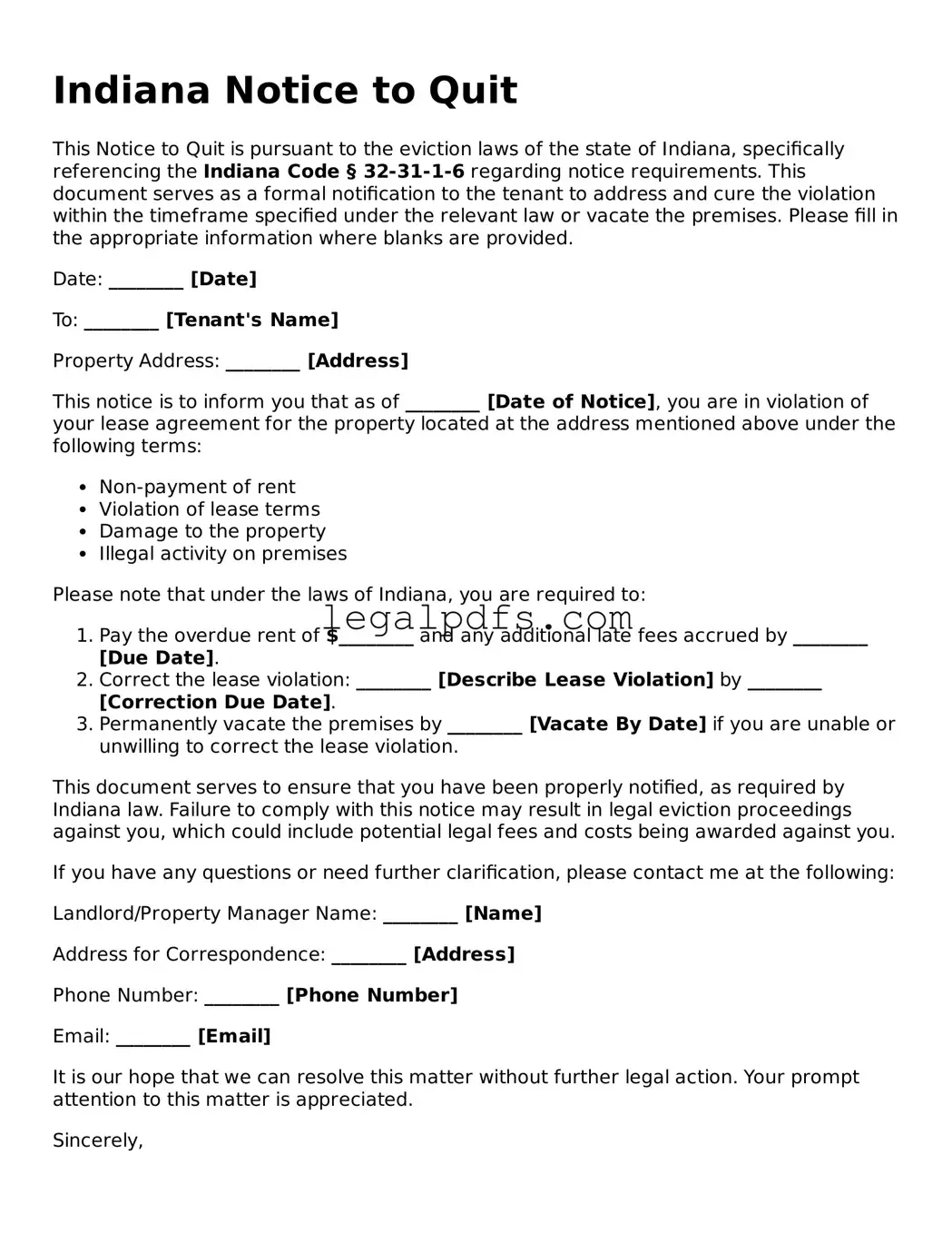Indiana Notice to Quit
This Notice to Quit is pursuant to the eviction laws of the state of Indiana, specifically referencing the Indiana Code § 32-31-1-6 regarding notice requirements. This document serves as a formal notification to the tenant to address and cure the violation within the timeframe specified under the relevant law or vacate the premises. Please fill in the appropriate information where blanks are provided.
Date: ________ [Date]
To: ________ [Tenant's Name]
Property Address: ________ [Address]
This notice is to inform you that as of ________ [Date of Notice], you are in violation of your lease agreement for the property located at the address mentioned above under the following terms:
- Non-payment of rent
- Violation of lease terms
- Damage to the property
- Illegal activity on premises
Please note that under the laws of Indiana, you are required to:
- Pay the overdue rent of $________ and any additional late fees accrued by ________ [Due Date].
- Correct the lease violation: ________ [Describe Lease Violation] by ________ [Correction Due Date].
- Permanently vacate the premises by ________ [Vacate By Date] if you are unable or unwilling to correct the lease violation.
This document serves to ensure that you have been properly notified, as required by Indiana law. Failure to comply with this notice may result in legal eviction proceedings against you, which could include potential legal fees and costs being awarded against you.
If you have any questions or need further clarification, please contact me at the following:
Landlord/Property Manager Name: ________ [Name]
Address for Correspondence: ________ [Address]
Phone Number: ________ [Phone Number]
Email: ________ [Email]
It is our hope that we can resolve this matter without further legal action. Your prompt attention to this matter is appreciated.
Sincerely,
________ [Your Name]
